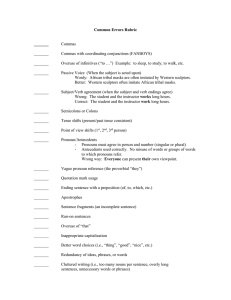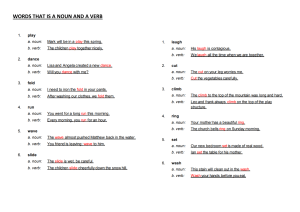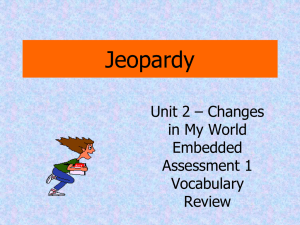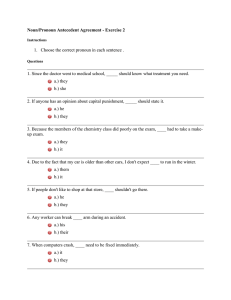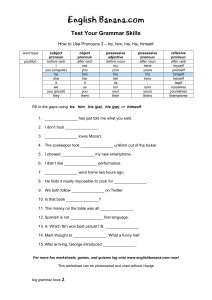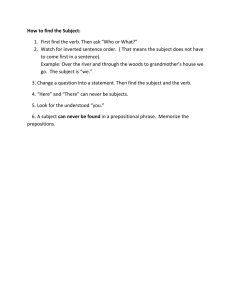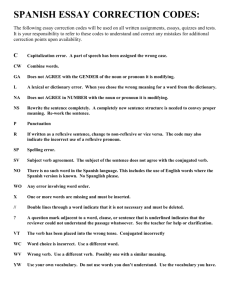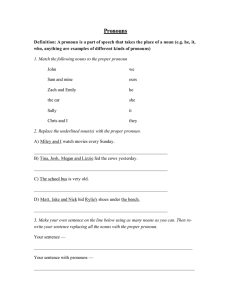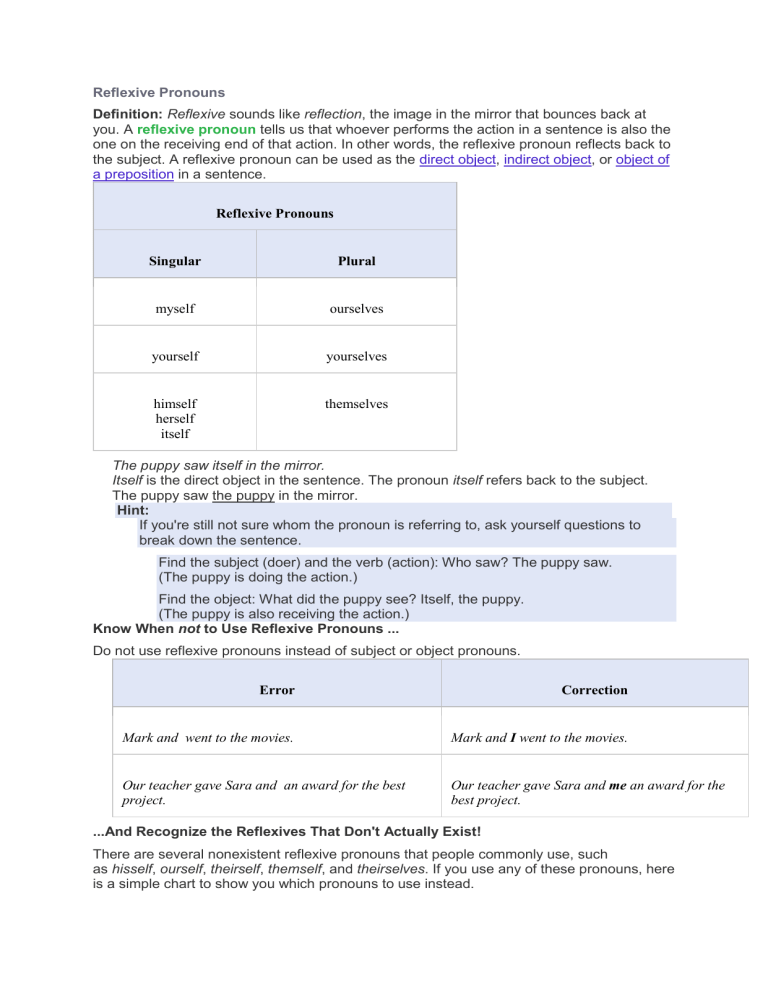
Reflexive Pronouns Definition: Reflexive sounds like reflection, the image in the mirror that bounces back at you. A reflexive pronoun tells us that whoever performs the action in a sentence is also the one on the receiving end of that action. In other words, the reflexive pronoun reflects back to the subject. A reflexive pronoun can be used as the direct object, indirect object, or object of a preposition in a sentence. Reflexive Pronouns Singular Plural myself ourselves yourself yourselves himself herself itself themselves The puppy saw itself in the mirror. Itself is the direct object in the sentence. The pronoun itself refers back to the subject. The puppy saw the puppy in the mirror. Hint: If you're still not sure whom the pronoun is referring to, ask yourself questions to break down the sentence. Find the subject (doer) and the verb (action): Who saw? The puppy saw. (The puppy is doing the action.) Find the object: What did the puppy see? Itself, the puppy. (The puppy is also receiving the action.) Know When not to Use Reflexive Pronouns ... Do not use reflexive pronouns instead of subject or object pronouns. Error Correction Mark and went to the movies. Mark and I went to the movies. Our teacher gave Sara and an award for the best project. Our teacher gave Sara and me an award for the best project. ...And Recognize the Reflexives That Don't Actually Exist! There are several nonexistent reflexive pronouns that people commonly use, such as hisself, ourself, theirself, themself, and theirselves. If you use any of these pronouns, here is a simple chart to show you which pronouns to use instead. Error Correction himself ourselves , , or themselves Intensive vs. Reflexive Pronouns Definition: Intensive is like intense. Something intense is very strong. An intensive pronoun emphasizes a preceding noun, which is often (but not always) the noun immediately before the pronoun. Intensive pronouns look exactly the same as reflexive pronouns, but they are only used for emphasis. The queen herself gave the knight the award. The queen gave the knight the award herself. Herself refers to the queen. Using an intensive pronoun tells the reader (or listener) that it's a big deal that the queen gave the award. After all, she's not just anybody—she's the queen! Because intensive pronouns are used only for emphasis, they can be removed from a sentence without affecting its meaning. The same is not true of reflexive pronouns, which do cause a change in meaning when removed from a sentence. Look at the following comparison to understand the difference. Reflexive Intensive The queen bought herself a dog. The queen bought the dog herself. The queen bought something for herself. She is both completing and receiving the action in the sentence. The intensive pronoun herself merely emphasizes the fact that the queen (not someone else) was the one who bought the dog. Notice how the meaning changes when we remove the reflexive pronoun: If the intensive pronoun is removed, the meaning doesn't change: The queen bought a dog. The queen bought the dog . Did the queen buy the dog for herself, or did she buy it for someone else? Without the reflexive pronoun, there's no way to know for sure. The queen still bought the dog regardless of whether the intensive pronoun is in the sentence or not. A direct speech is a sentence that gives a statement or thought in its original form according to how the original speaker said it. Examples: “Our classmate is sick and he is in the hospital,” Ben said. “We visited our classmate in the hospital,” Ben said. Now, look closely at Teacher Marie’s lines. The quotation marks and the comma were omitted. The word “that” was added. The tense of the verb was changed and so with the pronoun. Those lines are examples of reported speech. A reported speech is a sentence that expresses the content of a statement without quoting just like what is done in direct speech. Examples: Ben said that their classmate was sick and he was in the hospital. Ben said that they had visited their classmate in the hospital. When changing direct speech to reported speech, the following should be observed: 1. The quotation mark and the comma are no longer used in the reported speech. Example: Direct Speech “Grandmother teaches me how to cook,” Sheila said. 2. Reported Speech Sheila said that her grandmother taught her how to cook. Follow the format of the introductory words in the reported speech: noun/ pronoun + said Examples: Direct Speech “Grandmother teaches me how to cook,” Sheila said. Reported Speech Sheila said that her grandmother taught her how to cook. “Grandmother teaches me how to cook, “she said. She said that her grandmother taught her how to cook. 3. The word that is used to introduce the reported statement. Example: Direct Speech “Grandmother teaches me how to cook,” Sheila said. 4. Reported Speech Sheila said that her grandmother taught her how to cook. The verb form is changed in the direct speech to the reported speech. a. Present tense to past tense Examples: Direct Speech “Dad teaches me how to swim,” Sheila said. Reported Speech Sheila said that her dad taught her how to swim. “The child knows the answer,” Betty said. Betty said that the child knew the answer. “The fisherman catches fish,” The boatman said. The boatman said that the fisherman caught fish. b. Past Tense to Past Perfect Tense Examples: Direct Speech “Grandmother taught me how to cook,” Sheila said. Reported Speech Sheila said that her grandmother had taught her how to cook. “The child knew the answer,” Betty said. Betty said that the child had known the answer. “The fisherman caught fish,” the boatman said. The boatman said that the fisherman had caught fish. c. Present or future modals to past modals Examples: “I can dance,” the girl said. Direct Speech Reported Speech The girl said that she could dance. “The visitor may come in our school,” the teacher said. The teacher said that the visitor might come in their school. “They will clean the classroom,” Peter said. Peter said that they would clean the room. Refer to the table below which shows present or future modals to past modals: Direct Speech Reported Speech can could may might will would shall should 5. The pronoun also changes: Examples: Direct Speech . “Our friend is sick and he stays at home,” Jay said. Reported Speech Jay said that their classmate was sick and he stayed at home. “We visited our classmate in the hospital,” Ben said. Ben said that they had visited their classmate in the hospital. “You can do this,” my classmate said. My classmate said that he could do that. When changing the reported speech back to its direct speech, follow the steps below: 1. Analyze the sentence first. Underline the thought of the sentence. Example: The class monitor said that the students were all present. The underlined words is the thought of the sentence. 2. Capitalize the letter of the first word of the underlined words. Enclose quotations marks (“”) and put comma before the close quotation then add the noun/ pronoun + said then put a period. Example: “The students were all present,” the class monitor said. 3. a. Change the verb: past tense to present tense; past perfect tense to past tense. Example: “The students were all present,” the class monitor said. Answer: “The students are all present,” the class monitor said. b. Change also the modal: from past to present or future modal. Example: The girl said that she could dance Answer: “I can dance,” the girl said. Note: Replace the pronoun she with a pronoun I in the sentence. A. Noun Phrase 1. Definition Noun phrase is a phrase that has a noun as its head or performs the same function as a noun. Example: Noun Phrase Bryan’s birthday is on August 31. In this sentence, the subject is the noun phrase Bryan’s birthday. 2. Functions of a noun phrase a. As a subject of a verb Example: The tall tree fell down in the storm. In this sentence, the phrase ‘the tall tree’ functions as the subject of the verb ‘fell’ and it is therefore a noun phrase. b. As object of a Verb S V object of the verb Example: I wish to see the manager. In this sentence the phrase ‘to see the manager’ functions as the object of the verb ‘wish’ and it is, therefore, a noun phrase. B. 4 Verb Phrase 1. Definition Verb phrase is a part of a sentence containing the verb and any direct or indirect object, but not the subject. S verb phrase Examples: 1. Jane could have worked on that project today. S verb phrase 2.Victor is going to the dance. In sentence #1, the verb phrase is could have worked while in the second sentence, is going C. Prepositional Phrase 1. Definition Prepositional phrase begins with a preposition and ends with a noun or a pronoun called the object of the preposition. (Remember that a preposition is a word placed before a noun or pronoun to show its relation to some other words.) Examples: 1. The cat scratched his hand with fear. (The prepositional phrase is with fear modifies cat.) 2. One day, an old man was having a stroll in the forest. (The prepositional phrase is in the forest modifies old man.) To help you identify the prepositional phrase, here is a list of prepositions. LIST OF COMMON PREPOSITIONS about Before except next to to above Behind for of toward across Below from off until after Beneath in on under against Beside in addition to on account of underneath ahead of along Between Beyond in back of inside outside over up upon among By instead of since with around Down into through within at During near throughout without Scanning It is a reading technique used to look for specific information. It could be in an encyclopedia, a newspaper, index, or other materials. These reminders will help you when you scan. 1. 2. 3. 4. Decide what kind of information you are looking for. 5. Write the answer. Look only for the information. Do not read every word in every sentence. Let your eyes flow down the page following a set of patterns. Read around a word that catches your eye. Stop at the sentence which you think has the answer. Read the sentence to be certain that you have the correct answer. Skimming It is reading swiftly or glancing quickly through a book or an article to get the general overview. Through skimming, you can find main ideas or determine an author’s purpose in writing an article. When you skim, allow your eyes to wander until you find the portion you are seeking. When you find that portion, read more carefully and more slowly. These are some tips to help you when you skim: 1. 2. 3. 4. 5. Read rapidly. Keep going, don’t look back. Slide over unimportant words. Focus on the general overview or the main idea of the Be sure you understand the purpose of the reading or the questions that are to be answered. Source: English Expressways II Intensive Reading It is a reading style that needs full concentration and complete focus. To read intensively is to learn from a chosen reading material. Doing serious reading books, periodicals, and other library materials for research work or a report is the main concern of this kind of reading. This reading style involves determining the elements of a literary piece. When you are asked to give a theme of a story, intensive reading is highly recommended because it requires higher comprehension and deeper analysis. When you read intensively, do the following: 1. 2. 3. Use guide questions for you to better understand the text you are reading. 4. 5. If you do not have a good retention ability, taking important points from the text is a big help. Keep yourself away from anything that might disturb you. Think only of the things related to the text because other thoughts might bother you which may result to lack of focus. If you still do not understand the text, read it again. What is Simple Past Tense? Verbs have different forms, called tenses. The tense of a verb tells us when the action happens. Simple past tense shows that an action started and completed in the past and has no relevance to the present time at all. It can also be used to describe how someone felt, what their emotional condition was, at a point in the past. Examples: walked visited looked took bet froze This time, you will learn the simple past tense structure. Simple Past Tense Structure Regular Verbs are verbs which are formed by adding -d or -ed of the word. Examples: 1. Last Wednesday, we decided to visit the zoo. 2. We walked toward the first exhibit. 3. I looked up at a giraffe as it stared back at me. The following are some of the rules for regular verbs. 1. For verbs ending in e, add d. Examples: Present Tense Past Tense live lived love loved date dated agree agreed care cared 2. For verbs ending in consonant + y, change y to i and add ed. Present Tense Past Tense try tried carry carried dirty dirtied hurry hurried Irregular Verbs are verbs that do not follow the simple system of adding “d” or “ed” to the end of the word to form the past tense or past participle. There are a number of irregular verbs. Examples: 1. 2. 3. The Hare sat down an hour ago. (sit) The Tortoise won the race. (win) He told them to wait in different places along the path. (tell) The verbs sat, won, and told are examples of irregular verbs. SOME OF THE MOST COMMON IRREGULAR VERBS Base Form become Simple Past became Past Participle become begin began begun buy bought bought come came come cut cut cut do did done draw drew drawn fall fell fallen find found found get got gotten go went gone know knew known run ran run throw threw thrown wear wore worn

